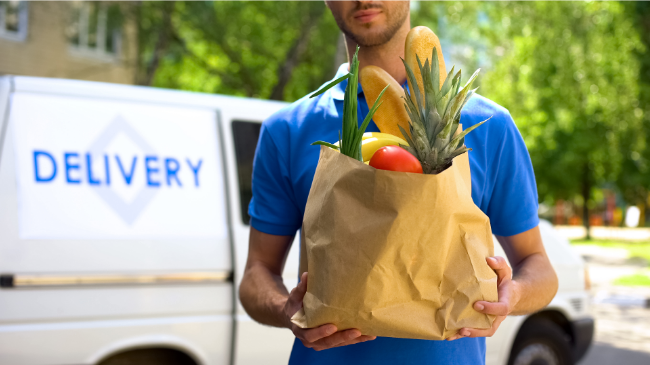Diversity in Grocery: 4 Trends to Watch for (and How to Get Ahead)
The grocery industry is in a peculiar predicament: stores are seeing an influx in customer demand amid a severe labor shortage.
It’s a terrible situation to be in, especially as competitors in the Q-commerce industry seek to sweep away your customers.
The good news: today’s consumers are hybrid grocery shoppers. So relying solely on e-commerce to sell groceries isn’t the answer. You need a well-planned (and executed) omnichannel strategy to attract and retain the customer of tomorrow.
How can you achieve this if your staff is on the short side? We’ve got tips to help you make it through. First, let’s get to the root of the problem.
What’s causing labor shortages in grocery stores?

It’s not a mystery why workers are disappearing from the trenches. It’s a series of events that played out, inevitably leading to the labor shortage we see today. Here’s what happened:
- The pandemic hit, forcing lockdowns and instilling fear in essential workers
- Unemployment and stimulus benefits provoked retail workers to leave (or not return to) work
- Lockdowns went away, but workers failed to return
It’s been two years since the start of the pandemic, and yet, we’re still seeing the repercussions. There are three top reasons grocery store workers are running for the hills (shockingly, pay isn’t one of them):
- Omicron variant sends workers home
- Burnout causes grocery staff to quit
- Lack of advancement opportunities makes retail less attractive
Now, grocers are facing problems with:
- Loss of customers to competitors
- Increased cost of goods
- Decreased hours of operation
- Reduced grocery store expansion
So what’s a grocer to do? Here are six ways to overcome the labor shortage in 2022.
What can grocers do to overcome labor shortages?
There’s a tight labor market, and competitors are waiting to poach your top employees. However, there are ways to increase your bargaining power in the job market.
Here’s what to do.
1. Adopt automation solutions

Automation is the future of grocery. Adopt it today or fall behind competitors already integrating it into their stores. There are various ways you can automate store operations to streamline processes and maximize revenue and savings.
For example, stor.ai’s picking app can minimize burnout by enabling pickers to find products (and substitutions) quicker. Automation also assists with inventory management. Since stor.ai integrates with POS systems, grocers use it to improve inventory visibility and prevent (or prepare for) stockouts.
The new grocery brand, Nourish + Bloom, went all out with automation by creating a fully automated store. Its design is to get customers in and out as quickly as possible, offering a seamless shopping experience. This is possible using a mix of computer vision equipment to process payments, AI-based voice and gesture tech to speed up checkouts, and fast delivery using robotic vehicles.
Plus, it’s open 24 hours a day, 7 days a week. A prime example of the store of the future.
2. Offer long-term incentives
Hourly workers want a living wage. The service industry, particularly in food and beverage businesses, is known for its minimum wage rates (or close to it). So increasing your hourly pay is one way to appeal to job seekers.
Take it further by offering other incentives to sweeten the deal. Like offering better health insurance benefits and a bonus at the end of the year. Worried they’ll take their bonus and leave?
Then ensure the workplace culture is fulfilling (promotes inclusivity and zero-tolerance for toxicity). Creating training and promotion programs may also reduce the quit rate and entice workers to stick around for the long term.
3. Be transparent with your workforce
A burnt-out workforce is a disloyal workforce. Being transparent with your workers instills trust and opens the door to feedback. Host ongoing meetings to discuss store issues and work labor shortages that’ll affect them.
Get suggestions from employees to solve problems together. You may learn they’re open to adopting HR technologies to claim and swap hours and days vs. having static schedules (and dealing with call-outs).
4. Build micro-fulfillment centers (if it’s feasible)
If you have the funds, building MFCs can boost your store’s productivity and revenue generation. This is what some grocers did to keep up with the rapid rise in online orders. Some of the benefits of using MFCs include:
- Faster last-mile fulfillment
- Reduced logistics costs
- Lower labor costs
- Improved customer satisfaction
It’s a strategy we’ll likely see grow in the coming years, so prepare now to get ahead of the curve.
5. Be innovative
The grocery stores that excel in the future will be those unafraid to innovate. There are a couple of great examples of innovation taking the grocery industry by storm.
For instance, Walmart’s “Just Walk Out” stores that enable shoppers to walk in with a credit card or app, select their items, and leave out.
Or using smart shopping carts that instantly recognize items and weight to calculate the costs before the customer reaches the register. It even points them in the right direction for products, minimizing the need for staff engagement.
“In a world where customers have ever-increasing options for putting food on the table, companies need to empower their front-line teams to execute next-level customer experiences that bring people back. This means investing in people, from wages and benefits to training and recognition. This also means strategically applying technology to make sure the employee experience keeps pace with the customer experience.” — Carol Leaman, CEO of Axonify
6. Improve labor force management using AI

Keeping “stock” of your workforce is key to preventing burnout in employees. Absenteeism and quitters will push your workplace to the limit if you’re not vigilant. However, seeing the warning signs early is difficult when you’re distracted by supply chain issues and inflation.
A solution: employing analytics and reporting tools. stor.ai’s dashboard gathers data to make decision-making easier for management. It shows intel like the number of units picked per store. Compare this to other locations to spot bottlenecks and shortcomings before they get out of hand.
The dashboard also shows how many pickers are on staff and their metrics (average daily orders picked, speed of fulfillment, etc.). Managers can even spot and prevent potential risks for missed deliveries. This may indicate a need to improve training or hire temp workers to pick up the slack.
Deliveries at risk of missing their delivery window? You’ll know via the platform. Use this to identify potential worker shortages early on.
Get through the labor shortage with the help of AI
The pandemic, customer demands, and employee preferences are outside of your control. The best you can do is listen and adapt. Outside of increasing pay and benefits, and developing a safe and healthy work environment, you need methods to enhance the workplace.
With technology, you can increase productivity, customer satisfaction, and profits. This is exactly what stor.ai seeks to help its customers accomplish via its end-to-end AI-driven solution for e-commerce, picking, and fulfillment platform. It’s a go-to solution for grocers looking to improve efficiency and profits.
If you’d like to see how stor.ai can help your grocery store amid the labor shortage, then book a demo with us today.
